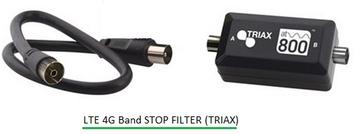
4G LTE Coverage: AT&T and T-Mobile
Explore 4G LTE coverage, focusing on AT&T and T-Mobile in the USA. Learn about LTE network topologies, TDD, and FDD.
Showing 25 posts (Page 1 of 5)
Advertisement

Explore 4G LTE coverage, focusing on AT&T and T-Mobile in the USA. Learn about LTE network topologies, TDD, and FDD.

Learn how 4G LTE filters prevent interference with digital TV reception by blocking LTE signals that overlap with UHF frequencies.
Learn 4G LTE identifiers including IMSI,NAI,IMEI,GUTI,APN,ECGI,ECI and MSISDN with their respective purposes and structures.
Learn about 4G LTE packet loss rate, its calculation, causes, and impact on network performance. Understand the formula and target rates.
Learn about 4G LTE PRB utilization, including its definition, formula, calculation, affecting factors, and ideal range.
Explore HARQ in 4G LTE networks: its types, functionality, advantages, and limitations for improving data reliability and throughput.

Explore the key differences between 4G speed and 4G range, delving into the factors influencing 4G LTE network performance and coverage.
Explore the differences between 4G and LTE, including data rates, standards, and the technologies that underpin them.

Understand the roles of CDF, CDR, and CTF in LTE charging. CDF creates CDRs from charging events triggered by the CTF, which monitor service usage.

Explore the pros and cons of CoMP in LTE networks, including improved network resource utilization and higher bandwidth, as well as challenges like large data transfer requirements.

Understand DNS in LTE EPC, including A, AAAA, SRV, and NAPTR records. Learn how DNS maps service addresses to names for efficient routing.

Explore the differences between ECM (EPS Connection Management) and EMM (EPS Mobility Management) in LTE networks, including their functions and states.

Explore the differences between EPS (Evolved Packet System) and EPC (Evolved Packet Core) in LTE networks, including architecture and components.

Explore a comprehensive comparison of GSM and LTE technologies, highlighting key differences in specifications, features, and network architectures.

Explore the key differences between Inband and Outband Device-to-Device (D2D) communication, including spectrum usage, advantages, and disadvantages.
Understand the differences between LAU, RAU, and TAU in GSM, UMTS, and LTE networks. Learn how these update procedures maintain UE connectivity during roaming.

Learn about LiTRA (LTE Integrated Trunked Radio), a trunking communications solution based on the 3GPP standard and LTE networks, developed for high security and safety.
Explore the continued relevance of the LTE 450 MHz band, its use cases in IIoT, smart grids, and private networks, and its advantages like long range and superior penetration.

An overview of LTE Advanced architecture, including E-UTRAN components like P-GW, S-GW, MME, and eNB. Also details the protocol stack divided into NAS and AS layers.
Explore LTE Advanced technology gain for features like MIMO, CoMP, beamforming, and interference cancellation in a concise table.

Explore LTE Advanced UE categories (Cat6-Cat12) with key parameters like data rates, DL-SCH, UL-SCH, and modulation schemes for efficient mobile communication.
Explore the evolution of mobile broadband with a clear comparison of LTE Advanced and LTE Advanced Pro, highlighting their features, data rates, and applications.
Explore the benefits and drawbacks of LTE technology, including data speeds, coverage, cost, and infrastructure requirements.
Understand the relationship between LTE bandwidth, sampling frequency, and resource blocks. Includes a table of common LTE configurations.

Explore the fundamentals of LTE Carrier Aggregation (CA) in TDD and FDD modes, including types of CA and frequency bands. Boost data rates with CA.
Advertisement